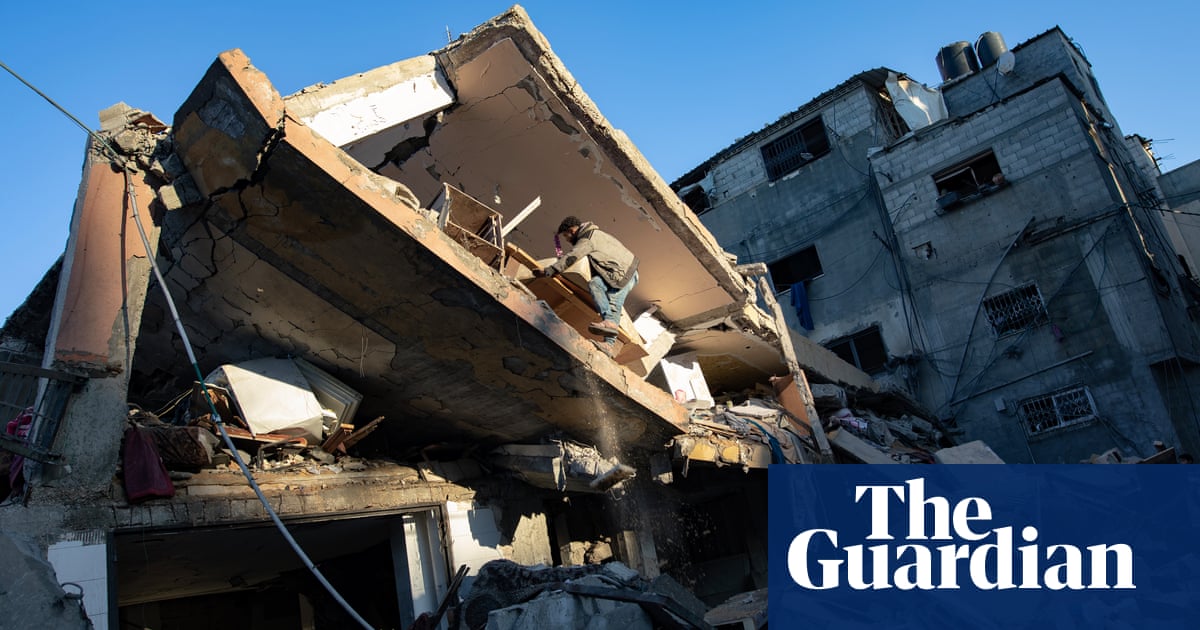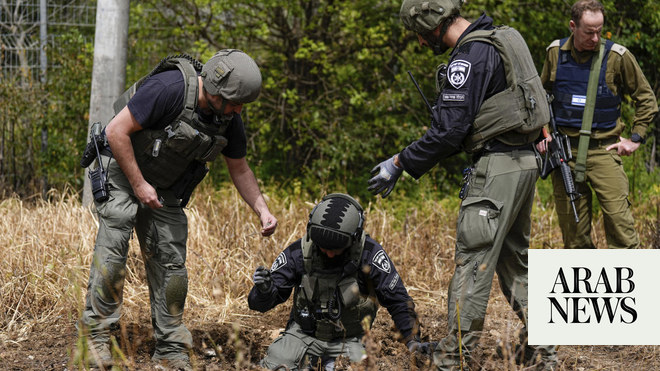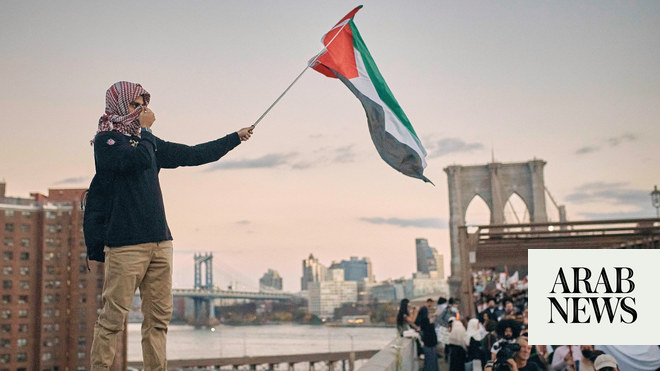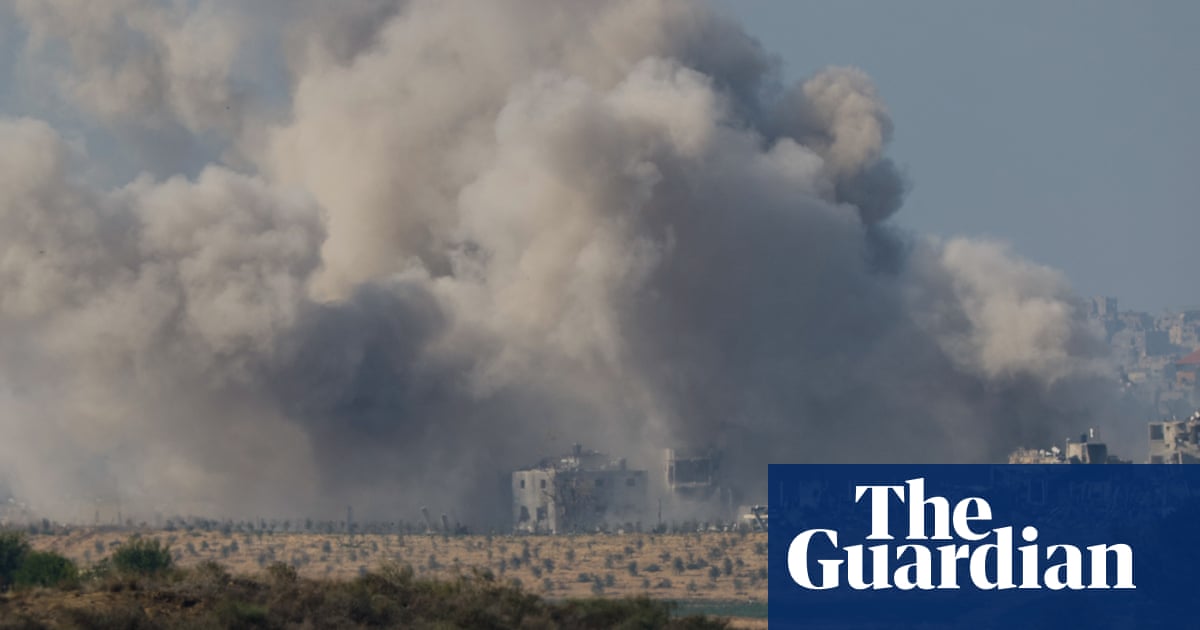
Since Hamas seized power in Gaza in 2007, Israel has fought three wars and dozens of skirmishes against militant groups
GAZA CITY: Residents say the airstrike came without warning: With fighting raging between Israel and Islamic Jihad (IJ) militants throughout Gaza, two loud blasts shook the night, destroying the Abu Malhous home and killing eight members of the family in a split second.
As Israel claims victory in its latest battle against Gaza militants, its tactics of carrying out airstrikes on private homes suspected of harboring militants could once again come under scrutiny over the civilian death toll. Among the 34 people killed in the two-day flareup were 16 civilians, including two 7-year-old boys and two toddlers, according to human rights investigators.
A truce announced early on Thursday appeared to be breaking down less than 24 hours later, as Israel resumed airstrikes on Gaza overnight Friday after a series of Palestinian rocket attacks.
AbdelHajj Musleh, a neighbor, said many children lived in the house in the central Gaza town of Deir El-Balah. “If there had been a warning, no one would have waited for this death and destruction,” he said.
Since Hamas seized power in Gaza in 2007, Israel has fought three wars and dozens of skirmishes against militant groups. While the wars have inflicted heavy damage on Hamas and the smaller IJ group, hundreds of civilians have also died in Israeli airstrikes.
The high civilian death toll has drawn heavy international criticism, and the International Criminal Court in The Hague has opened a preliminary investigation into Israel’s battlefield tactics.
Lt. Col. Jonathan Conricus, an Israeli military spokesman, told reporters its targets are based on sophisticated intelligence and cleared by legal advisers and other experts, and that it often warns inhabitants to evacuate before their homes are struck. It says it has fine-tuned its guided missiles, delivering small payloads that minimize damage beyond the precise target.
The latest round of fighting began early Tuesday when an Israeli airstrike killed Bahaa Abu Al-Ata, a senior IJ commander who Israel said was responsible for numerous rocket attacks and was planning a deadly infiltration operation into Israel. The airstrike hit the top-floor apartment in Gaza City where he was sleeping, killing him and his wife.
Conricus said Israel had been following Abu Al-Ata for 10 days but had held off attacking him sooner because he routinely surrounded himself with crowds of civilians for protection.
Prime Minister Benjamin Netanyahu visited a group of Israeli soldiers to congratulate them on what he called a successful mission. “Our enemies got the message,” he said. “We can reach anyone, even in their beds.”
Such airstrikes can be permissible under international law, depending on the threat posed by the target and whether the damage to civilians is “proportional” to the military gain, said Omar Shakir, the country director of Human Rights Watch.
“Too often civilians pay the price for political brinkmanship by states and armed group,” Shakir said. “We’ve seen several rounds of fighting now in Gaza where civilians have lost their lives or had their property damaged and faced harrowing circumstances as the result of unlawful attacks by both parties.”
Palestinian militants also have come under international criticism for firing rockets indiscriminately at Israeli civilian areas. The Israeli military said dozens of the rockets this week were misfired and landed inside Gaza, with one believed to have damaged the offices of the International Commission for Human Rights, a Palestinian watchdog group. The group stopped short of criticizing the militants and called for an investigation of the incident.
In the case of Thursday’s airstrike in Deir El-Balah, neighbors said an IJ commander lived in the home that was destroyed. However, the commander wasn’t home and had apparently gone into hiding.
Instead, his brother, Rasmi Abu Malhous was killed, along with both of their wives and five children under the age of 13. They including his 7-year-old son and two nephews, ages 2 and 3.
The neighbors, speaking on condition of anonymity because they did not want to anger the family, said Rasmi Abu Malhous, 45, was not involved in any militant activity.
The home was virtually disintegrated by the blast, leaving a large crater with kitchenware, pillows and mattresses strewn about. Neighbors dug out eight bodies and tried to salvage some school backpacks and clothes.
“When we came, we did not recognize where the house was standing,” said Musleh, the neighbor. “The airstrike intentionally targeted civilians.”
HIGHLIGHT
The high civilian death toll has drawn heavy international criticism, and the International Criminal Court in The Hague has opened a preliminary investigation into Israel’s battlefield tactics.
Israel argues that civilian casualties are inevitable in Gaza’s densely populated urban environment. Militants often fire rockets from crowded residential areas, drawing Israeli retaliatory strikes, and Israel accuses the militants of using civilians, including their own families, as human shields.
Conricus, the military spokesman, said he had no information about the particular airstrike. But he defended the attacks on private homes, saying IJ commanders used their residences to store weapons or as command and control centers, making them legitimate military targets.
“All of our operations were measured, proportionate and focused only on military assets” belonging to the IJ, he said.
While the Israeli military said as many as 25 militants were killed, Palestinian human rights monitors said the dead included 18 militants and 16 civilians. They included three women and eight minors.
It was the deadliest round of fighting since a devastating 50-day war in 2014. Since then, the bitter enemies have fought a number of smaller rounds, each lasting a few days.
The policy of attacking militants’ homes became a common tactic in that war, in which a tally by The Associated Press found that 508 civilians were killed in airstrikes.
In this week’s fighting, IJ fired some 450 rockets toward Israel, with most landing in open areas or being intercepted by Israel’s Iron Dome defense system.
But the nonstop rocket fire crippled life across southern and central Israel as far away as Tel Aviv, some 80 km away. Three Israelis were slightly wounded by shrapnel or shattered glass.
IJ said the cease-fire went into effect at 5:30 a.m. and claimed it was based on three conditions: An end to targeted killings, a halt in Israeli shootings of protesters at weekly demonstrations along the Israeli frontier and easing a 12-year Israeli blockade that has devastated Gaza’s economy. Israeli officials insisted they had made no concessions.
Supporters of IJ held scattered protests across Gaza late Thursday to express anger at the truce. Renewed rocket fire overnight drew Israeli retaliatory strikes. There were no immediate reports of new casualties.
Israel imposed the blockade after Hamas violently seized control of Gaza from the internationally backed Palestinian Authority. Israel considers Hamas and IJ, which both seek its destruction, to be terrorist groups.
Residents of hard-hit southern Israeli towns welcomed the quiet on Thursday, but said Israel had to keep the pressure on militants.
“We need to hit them hard, that’s what needs to be done until they say, ‘Enough, we want a cease-fire,’” said Yosef Itach, a resident of Sderot. “This is the way to show them who’s the strong one.”












